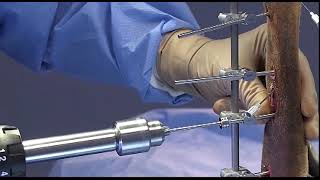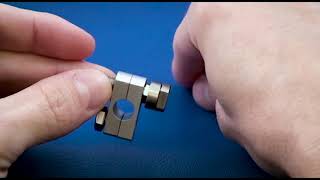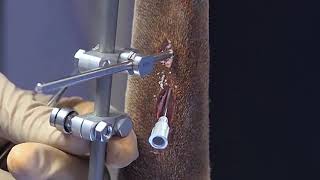SK ESF Clamp, Single
Additional Product Information
Mini SK ESF Clamp
Utilizes 7 mm wrenches and 3.2 mm (1/8”) diameter stainless steel external rods. Supports use of 0.9 mm (0.035”), 1.1 mm (0.045”), and 1.6 mm (0.062”) shaft miniature Interface and Centerface pins, as well as a 2.0 mm (0.078”) shaft Interface pin. In addition, the mini SK ESF clamp also supports through-the-clamp placement of 2.0 mm shaft Interface and Centerface pins with 2.5 mm threads, and 2.5 mm Duraface pins. Maximum diameter accepted is 2.5 mm.
Small SK ESF Clamp
Utilizes 6.3 mm diameter external rods and 8 mm wrenches. Supports use of 2.0 mm, small, small-plus, 3.0 mm and medium Interface and Centerface pins. Duraface pin sizes: 2.5 mm, small, small-plus and medium are also compatible. Maximum diameter accepted is 4.0 mm (5/32”).
Large SK ESF Clamp
Utilizes 9.5 mm diameter external rods and 10 mm wrenches. Supports use of 3.0 mm, medium, medium-plus and large Interface and Centerface pins. Duraface pin sizes: medium, medium-plus and large are also compatible. Recommended pin shafts 3.2 mm (1/8”) to 4.0 mm (5/32”). Maximum diameter accepted is 4.8 mm (3/16”). Most commonly used pin is the medium.
FAQs
-
What pin sizes does each SK ESF clamp support?
-
What is the proper way to tighten fixator nuts and bolts?





